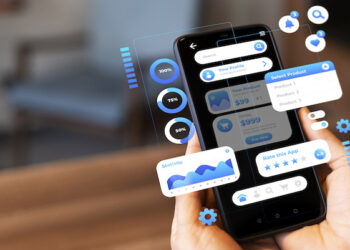To say it very simply: A point of purchase (POP) is a place where sales are made.
At a macro-level, a point of purchase may be a mall, a market or some other environment but at a micro-level, retailers and advertisers consider a point of purchase to be the area surrounding the counter where customers pay. We often refer to this behavioural and geographical space as ‘point of sale’. (POS)
Broader definitions of POP would include not only the point where customers pay or transact for the goods they have selected, but the definition also extends to display areas on the shelves themselves, as well as dedicated promotions designed to encourage purchases anywhere within the retail space. Essentially anywhere within the retail space or more importantly any other space that consumers will make the purchase decision.
Marketing best practice often suggests that 70% of shopper purchase decisions are made in store, but for marketers this theory does not go nearly far enough to be of any real use.
Measuring POP effectiveness
Marketers are challenged to understand the different kinds of decisions that shoppers are making, and then be able to generate insights that will help them develop smarter and more targeted programmes aimed at selling more products in store.
However, traditional POP effectiveness has proved itself very difficult to measure, because there are many factors that influence the purchase decision. Product branding, position on shelf, store layout, notwithstanding the price of the item itself. Did I mention seriously cluttered environments?
 Online Shopping certainly offers the opportunity to better understand consumer purchase behaviour. Advances in technology allowing for easier collection of transaction information, coupled with the ability to track individual consumer purchase behaviour, allowing retailers to offer online consumers more relevant products.
Online Shopping certainly offers the opportunity to better understand consumer purchase behaviour. Advances in technology allowing for easier collection of transaction information, coupled with the ability to track individual consumer purchase behaviour, allowing retailers to offer online consumers more relevant products.
But online shopping does lack many of the things that consumers like about traditional retail shopping, like sensory stimulation from touch, smell and taste, not to forget the instant gratification of slipping into a good pair of Levis or chomping on the chocolate you have chosen while waiting in the queue for payment. While there is no queuing online for sales, there is typically a delay for delivery of items purchased on line. In short, the shopping activity is immediate, but the gratification is delayed., anywhere from a couple of hours to a couple of weeks.
It is true that online shopping is growing rapidly across the globe, in Asia Pacific it accounted for 12.1% of all retail sales, which is huge. In Europe and North America, around 8% of all retail sales were made online.
Online shopping in Africa however, remains relatively small in comparison, estimated at 1.8% of all retail sales based on global retail statistics.
Online shopping
But, principally online purchases are reserved for the higher income groups who prefer the convenience and even security that online shopping brings. According to the IAB Effective Measure report for 2016, 65% of online shoppers in South Africa earned R12 000.00 per month or more. With 64% being in full time employment. Average HH income in the newly released Establishment Survey is R9 885 and only 37% being employed full-time.
Of the online purchases made in South Africa, only 9% of all purchases online were typical grocery purchases/food, and the majority of purchases were for entertainment items, such as concert tickets, travel tickets and hotel reservations; with most purchases being made on a credit card.
So, we know that e-commerce is on the rise, and may be mounting a long-term challenge, but in reality, it will take a long time before it competes with traditional bricks and mortar retail in Africa.
It would appear then, because of its importance in the product buying chain, effective POP display continues to have as dramatic impact on sales for a product category or brand as ever.
Or does it?
Point After Purchase (PAP)?
The question I want to ask is, “When does your POP become Point After Purchase (PAP)?”
We know POP in store is highly competitive, so what can marketers do with POP to get noticed? How can it motivate customers to make more impulse buys at the point of sale?
There are some guidelines which marketer can follow. It’s the usual stuff: Use bright colours, use engaging graphics, and simple messages. Make sure your packaging stands out, try unusual shapes, let your creativity and cleverness take hold; the more fun the better… make competitive value offering, such as discounts, banded packs, competitions, or even cross merchandising, and of course make sure you have stock.
But surely this is where an effective POP strategy ends… and not where it begins.
 Ogilvy’s global shopper study, Shopper Decisions Made In-Store (SDMIS) interviewed over 14 000 shoppers in 700 retail outlets across 24 markets globally.
Ogilvy’s global shopper study, Shopper Decisions Made In-Store (SDMIS) interviewed over 14 000 shoppers in 700 retail outlets across 24 markets globally.
The study spanned five retail channels across six product categories to examine how shopper decisions differ across shopping channels, product categories as well as brands, and how those decisions vary by country and shopper profile.
There were many interesting insights in the research.
Even when shoppers have planned which category they will buy from, for 28% of shoppers the decision on which brand to buy is left until inside the store. The study also reveals that one out of 10 shoppers will switch brands in store, and the study urges marketers to focus on retaining the 10% with effective POP strategies.
Building brand equity
But there’s another way to look at it.
It’s equally clear from the research that 72% of consumers have already made their category and brand purchase decision before they get to the store, and nine out of 10 consumers won’t switch brands! That is an astounding figure! And an amazing opportunity for advertisers!
In other words, what SDMIS is telling us is that for 90% of consumers, POP is in effect Point after Purchase.
What does that mean for traditional POS and POP advertising formats?
It means is that while it is still important for the brand building and activation initiatives to continue inside the store, building brand equity through ATL media platforms is essential. And you need to ensure that yours is the brand of choice in the consumer’s mind before the consumer reaches the retail outlet.
More and more, OOH and mobile are the ‘last engagement point’ before purchase decisions are made. Consumers search for information, relevancy and details about certain products, and three out of every four make their purchase decision prior to going to the retail outlet.
Effective product sales strategy must ensure that it not only has a strong presence in store, but needs to focus on prompting consumers to purchase the product en route to the store itself. OOH and particularly OOH and mobile in combination, offers advertisers reach at the time of decision making.
The ultimate objective of any advertising is to influence the purchase decision, and to drive sales, and so, for example, exposure to fast food ads is optimal when it occurs just before a consumer gets to the food court.
Dynamic media channel
OOH is one of the most dynamic media channels for targeting the digital consumer because OOH is able to engage with mobile consumers in the physical space, as they commute from place to place and purchase to purchase. OOH and mobile is contextually relevant, imbedded in our everyday lives, ready to deliver a message at the right time to the right audience.
OOH and mobile is an increasingly important part of the consumers purchase journey, and plays a vital role in strengthening Point of Purchase performance.
On top of this, digital OOH offerings in malls and key commuter environments have increased the effectiveness of campaign message delivery, and as static signs give way to electronic dynamically updated displays, advertisers are now able to present more targeted product sales information, instant coupons, and many more opportunities to consumers. The software used to control these dynamic OOH displays also allows for near-real time content updates, allowing advertisers to change sales messaging easily and create geolocation targeted promotions which allow for massively improved relevancy.
When a consumer sees an OOH ad on a daily commute, and then sees that brand again on any type of mobile device, whether conscious, or not, it resonates. The two messages reinforce each other; even more so when seen simultaneously. Then as you layer on mobile ads, with sales incentives like coupons, geo-located messaging or even hyper-personalised offers, it is an influencer of purchase behaviour, and is able to drive sales.[i]
More importantly a strong OOH and mobile strategy ensures that your brand is communicating with consumers where the purchase decision is being made, and not at the Point after Purchase.
Alasdair Muller is the head of sales for JCDecaux Sub-Saharan Africa.
[i] https://www.emcoutdoor.com/blog/2017/06/how-can-out-of-home-complete-the-media-puzzle/














